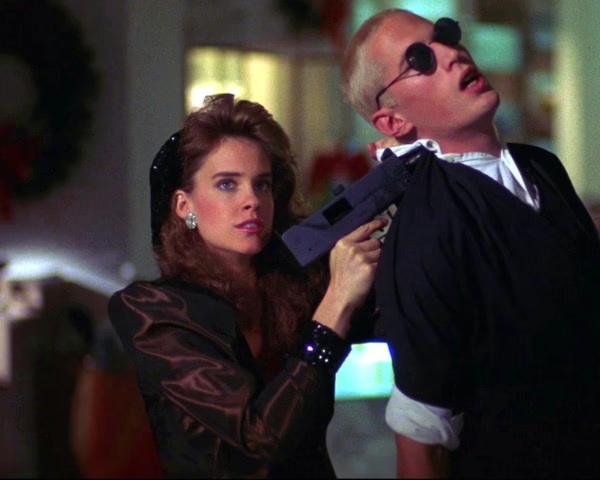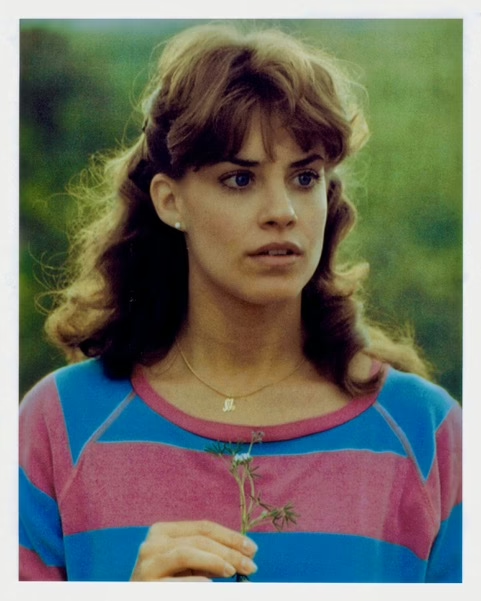Advertisement
Photo credit: Kevin Talley
__________________________________________________________________________________
Some movies don’t need to dominate the box office to change lives. They sneak into our imaginations, gather passionate followers, and slowly transform into cultural treasures passed down from one generation to the next. These are cult classics—films that may have seemed niche or quirky at release but have grown into enduring icons. Few actors embody this phenomenon better than Catherine Mary Stewart, whose work in The Last Starfighter and Night of the Comet helped shape the genre’s golden age and continues to inspire fans decades later.
What Makes a Cult Classic Endure
Cult classics thrive on individuality. They’re often films that felt too strange or ahead of their time for mainstream audiences but struck a nerve with those craving something different. Instead of fading away, they linger in midnight screenings, retro festivals, and online fan groups. Quotes become part of pop culture shorthand. Props turn into cherished collectibles. Fans find each other and form communities built around shared love for stories that dared to be unique.
The Last Starfighter: From Arcade Dreams to Galactic Hero
When The Last Starfighter premiered in 1984, it was revolutionary. Combining early CGI with a wish-fulfillment story, it told the tale of Alex Rogan, a small-town teen recruited to fight an interstellar war after beating a video game—a dream scenario for an entire generation raised on arcade cabinets. Catherine Mary Stewart’s Maggie Gordon brought heart to the adventure, grounding the story with warmth and youthful hope. Fans connected to her sincerity and her chemistry with lead actor Lance Guest, making Maggie a beloved figure for those who saw themselves in the film’s unlikely heroes.




“I meet fans all the time who say that The Last Starfighter made them believe extraordinary things could happen to ordinary people,” Stewart has said in interviews. The film didn’t just entertain—it sparked creativity and ambition among young viewers who dreamed of adventure beyond their small towns.
Night of the Comet: Apocalypse With a Cool, Cult Twist
Released the same year, Night of the Comet flipped the apocalypse genre on its head. Instead of rugged soldiers or grizzled survivors, the fate of the world rested on two valley-girl sisters—Reggie and Sam. Stewart’s portrayal of Regina Belmont, a fearless but relatable heroine, broke stereotypes by giving audiences a cool, capable young woman leading a sci-fi action story. The film mixed horror, comedy, and 80s style with a soundtrack and aesthetic that still inspire fashion, memes, and homages today.
For many fans, Reggie was a revelation. She was resourceful, funny, and tough without losing her humanity. “People still come up to me and say Reggie was the first female character they’d seen who felt like them—normal but brave,” Stewart has reflected.
A Legacy Kept Alive by Fans
The love for these films hasn’t faded. Conventions regularly feature Stewart as a guest, where fans arrive dressed as arcade champions or comet survivors. Social media buzzes with tributes, fan art, and anniversary celebrations. Blu-ray re-releases and collector’s editions keep the stories alive for new generations discovering them for the first time.
For many fans, the emotional connection runs deep. Some credit The Last Starfighter with sparking an interest in technology and game design, while Night of the Comet continues to resonate with women who grew up hungry for strong, adventurous heroines. These films weren’t just entertainment—they were blueprints for imagination and empowerment.
Why Cult Classics Still Matter
In an era dominated by remakes and franchise blockbusters, cult classics remain a testament to originality. They show how creativity can outlast initial box office results, and how fan passion can keep a story alive far longer than studio marketing ever could. Catherine Mary Stewart’s iconic roles remind us that sometimes the movies that change us aren’t the ones everyone saw—they’re the ones that made us feel seen.
Our Thoughts on Cult Classics — And Catherine Mary Stewart’s Lasting Impact
Cult classics have always fascinated us. They’re the films that refuse to stay forgotten, the ones that may have opened quietly in theaters but built a second life through word of mouth, late-night screenings, and passionate fans who keep them alive. These are the stories that feel personal — the ones you quote with friends, the ones that spark creativity, identity, and belonging.
When we think of the golden age of cult cinema, Catherine Mary Stewart inevitably comes to mind. In the early 1980s, she stepped into two very different but equally iconic worlds: the hopeful, game-powered adventure of The Last Starfighter and the witty, post-apocalyptic survival tale of Night of the Comet. Each film tapped into something unexpected and resonant — and Stewart’s presence helped shape how audiences experienced them.
In The Last Starfighter, her portrayal of Maggie Gordon grounded the story’s cosmic spectacle. Amid groundbreaking early CGI and arcade-era dreams, Maggie felt real — hopeful, brave, and deeply human. She gave the film heart, reminding viewers that extraordinary adventures often begin with ordinary people.
Then came Night of the Comet, a film that dared to center two sisters in an end-of-the-world narrative. Stewart’s Regina Belmont was resourceful and sharp but never stripped of humor or vulnerability. She offered a new kind of heroine at a time when sci-fi and horror were often dominated by rugged men or helpless victims. For countless young women, Reggie was a revelation: smart, capable, and unapologetically herself.
These performances didn’t just make great characters; they helped expand what cult classics could be. They proved that a film could be strange and niche yet still emotionally accessible. They showed that female leads could drive sci-fi and horror without compromise. They invited outsiders, dreamers, and misfits into stories that felt like secret clubs — and those fans have carried the torch for decades.
Today, as streaming platforms revive hidden gems and conventions celebrate retro favorites, Stewart’s work continues to inspire. New viewers discover her characters and find the same spark audiences felt in the 80s: the idea that the weird, the imaginative, and the offbeat can be powerful, joyful, and deeply meaningful.
For us, that’s the beauty of cult cinema — its staying power isn’t dictated by box office numbers, but by connection. And Catherine Mary Stewart’s legacy proves that a single authentic performance can echo for generations, helping define an entire era of beloved, enduring film.
ABOUT CATHERINE MARY STEWART
Catherine Mary Stewart, born Catherine Mary Nursall on April 22, 1959, in Edmonton, Alberta, Canada, is an actress best known for her work in 1980s cult classics and popular television. The daughter of Mary (a physiologist) and John Ralph Nursall (a biologist), she grew up in an academic family alongside her brothers Alan, a science center CEO and science broadcaster, and John, an educational film, television and e-learning writer, director and producer. After studying jazz dance as a child, she moved to London to train in dance, acting, and singing, and while there landed her first film role in the 1980 rock musical The Apple. At the suggestion of director Menahem Golan, she adopted her mother’s maiden name, becoming Catherine Mary Stewart. Moving to Los Angeles in 1981, she soon gained recognition playing the original Kayla Brady on the soap opera Days of Our Lives from 1982 to 1983. Stewart’s breakthrough came with iconic roles in the 1984 sci-fi adventure The Last Starfighter, in which she played Maggie Gordon, and the post-apocalyptic cult favorite Night of the Comet, where she starred as Regina “Reggie” Belmont. She went on to appear in the teen comedy Mischief (1985) and as Gwen Saunders in the hit comedy Weekend at Bernie’s (1989), along with guest spots on shows like Knight Rider, Hotel, Alfred Hitchcock Presents, and The Outer Limits as well as iconic mini-series such as Hollywood Wives, and Sins. In the mid-1990s she stepped back from acting to focus on raising her family but later returned to the screen, including Hallmark and holiday films such as A Christmas Snow (2009), A Nutcracker Christmas (2016), Rock N’ Roll Christmas (2019) and, while also exploring directing and theater work. Catherine is presently directing a film and plans to direct much more in the future. She has written several scripts and is in the process of developing those to direct, as well.
INTERVIEW WITH CATHERINE MARY STEWART AND GUITAR THRILLS MAGAZINE
Guitar Thrills: Looking back, what does it mean to you to have starred in films like The Last Starfighter and Night of the Comet — movies that have become cult classics loved across generations?
Catherine: Mostly what I feel is gratitude. I’m grateful to have been involved with these lovely little films that have endured in such an incredibly positive way for so many years. Their resilience is astounding!
Guitar Thrills: When you first read the scripts for these films, did you have any sense that they might resonate so strongly and stay relevant decades later?
Catherine: In the ‘80s I was very busy as an actress. My life was consumed with auditions, work, and building my career. There were some wonderful scripts out there and I was fortunate enough to audition for most of them along with some big names of the day. It was an exciting time in Hollywood. I don’t remember thinking a lot about how successful a movie might become. I was more focused on what was next when that job was done. Most of my experiences on the sets were great and I think that that comes across in the finished product perhaps contributing to their longevity.
Guitar Thrills: Maggie Gordon in The Last Starfighter and Regina Belmont in Night of the Comet are very different characters but both beloved — what did you want to bring to each role that made them feel authentic and relatable?
Catherine: I had played “the girl next door” pretty continuously. It was a character I was familiar with and had empathy for, so I felt comfortable portraying Maggie in The Last Starfighter. When I was cast as Reggie in Night of the Comet, I was thrilled! It allowed me to explore a different side of myself. One that is probably closer to who I really am. I grew up with two older brothers.I had to learn a certain amount of toughness and independence as a kid and I feel like that was a great foundation for Reggie. I had so much fun playing the strong, Mac 10 wielding, zombie fighting, motorcycle straddling, Reg!
Guitar Thrills: Fans often say your characters helped redefine what female leads could be in SCI-FI and horror. Did you feel you were breaking new ground at the time, or did that realization come later?
Catherine: At the time it never occurred to me that we were breaking any barriers or ground. I was reveling in the unique story and the fun characters. That realization came later when I started doing conventions. I was surprised and so pleased that Sam (Kelli Maroney) and Reg had such an incredible impact on the audience both male and female, and everything in-between! These characters empowered so many in the audience to appreciate, encourage, and set an example of potential all with the backdrop of the end of civilization and the mall.
Guitar Thrills: The 1980s were a unique era for genre films. How do you think the creative risks taken then shaped today’s cult-classic culture and fan communities?
Catherine: Every era exhibits different kinds of movie making and storytelling. It’s a beautiful evolving art form. The ‘80s was a time of fun, escapism, effervescence, but also innocence. The characters that were portrayed in so many movies then were young and relatable. That was their magic. It was a time where that uncomfortable transition from childhood to adulthood was dissected in a lot of different ways in film. They made their audience feel acknowledged in a profound way.
Guitar Thrills: You’ve met countless fans over the years — can you share a moment or story where someone told you how your work personally impacted them?
Catherine: In The Last Starfighter I often hear that I was their first crush. Very sweet. I think it indicates that they felt like Maggie was accessible and that’s what you want your audience to come away with. In Night of the Comet, Reggie portrayed possibility and inspiration. Both movies found a huge audience in the VHS market. It enabled movies to be watched over and over. That can be very impactful. Many fans that I have met know these movies so much better than I. Both movies are upbeat, inspiring, and positive. I love that I could be a part of that.
Guitar Thrills: If Night of the Comet or The Last Starfighter were made today, how do you think the stories — and your characters — might be different?
Catherine: I can’t think of a movie today that is allowed to be as simple and sweet and relatable. These kinds of movies are not made today. We are in an era where movies are bigger, louder, more sensory blasting. They are produced with the goal of making as much money as possible, usually riding the coat tails of whatever previous movie made a ton of money. The idea of this being an artform with interesting stories and characters seems to be a very low priority and I feel that it sells the audience short. I would ask this; when movie ends do you feel like you’ve learned something or feel enlightened or inspired? Do you feel like you can relate to the characters? Can you even describe the story and its purpose? Does it stay with you? Do you think about it for the next while. For me, for the most part, not. I love movies, but I find more inspiration in smaller independent or foreign films, in general.
Guitar Thrills: Switching gears a bit — what kind of music inspires you personally? Are there artists or genres you always return to, and why?
Catherine: I’m a child of the 60’s and 70’s. Music played a big part of my life growing up. My brothers and I were always singing throughout the house. I would listen to records after school in our living room and if no one was home I would sing at the top of my lungs, learning the music and lyrics off by heart. I played the piano and even wrote a couple of songs of my own. On Sundays traditionally our family sat together for a pancake brunch. Dad would play music on our record player in the living room. It varied from classical, to Harry Belfonte, to Catherine McKinnon, to Kingston Trio, Nina and Frederik other contemporary and folk music of the day. I remember discovering The Beatles Rubber Soul, in the family record player console cabinet back in the late 60’s. It was a surprising and rather titillating discovery! This music had never been introduced to us. It felt rather shocking and scandalous. Rock and roll were still considered pretty edgy and I think my parents were hesitant to expose their children to it but once the record was out of the sleeve and on the turn table, I never turned back!! Over time many, many Beatles albums were purchased between me and my older brothers. I loved the Beatles, and still do, but Rubber Soul had the most enduring impact on me.
I have a lot of music that I’ve downloaded over time. To name some of my favorites and perhaps most inspiring include but are not limited to:
I also have a huge soundtrack collection from movies and theater. From various Vangelis soundtracks to Jesus Christ Superstar, to Car Wash, Fried Green Tomatoes, Daltry Calhoun, Local Hero, Rent. It goes on and on.
Guitar Thrills: When you’re working on set or preparing for a role, is there a particular song or style of music that helps you get into the right mindset or emotional space?
Catherine: I have definitely used music to help me create a mood or to inspire me, or to energize me. Of course, the music would be different for each situation. I have lots to choose from. I’ve also sang in a couple of movies and in theater. It was a total dream come true for me. I love music and musicians. I started out as a dancer then transitioned to acting, but I think if I could’ve, I would’ve been a musician/singer. Music and singing for me is pure joy.
Guitar Thrills: Many of your fans are also passionate about music and pop culture. If you could create a personal soundtrack that represents your life and career, what songs or artists would be on it — and what would they say about you?
Catherine: In the 80’s and 90’s I loved creating soundtracks of different artists for many different reasons and occasions. Right now, I’m looking at several cassette tapes that I put together around that time. I’m a romantic. I love listening to music that makes me really feel something. I love listening to music that I can sing to, that inspires me; puts me into a specific time and place. I’m listening to one of my favorite albums right now; Alchemy – Dire Straits Live. It warms me to the core.
Guitar Thrills Magazine – Final Word
At Guitar Thrills Magazine, we’ve always celebrated the artists who break molds — whether they’re musicians bending strings into new sonic worlds or actors breathing life into stories that refuse to fade. Catherine Mary Stewart belongs to that rare creative league. Through The Last Starfighter and Night of the Comet, she didn’t just star in cult classics — she helped define what they could be: fearless, heartfelt, imaginative, and fiercely independent.
Her characters invited us to dream bigger, to face the unknown with courage, and to embrace the beautifully unconventional. Decades later, those films still inspire fans the way a timeless guitar riff electrifies a room — unexpected, unforgettable, and always resonant. Stewart’s legacy proves that true artistry isn’t about chasing trends or box office numbers. It’s about crafting moments that echo long after the credits roll.
And just like a great song that lives in your bones, her work keeps playing on — inspiring dreamers, rebels, and creators to this day.

A RECAP OF WHAT YOU MIGHT HAVE MISSED